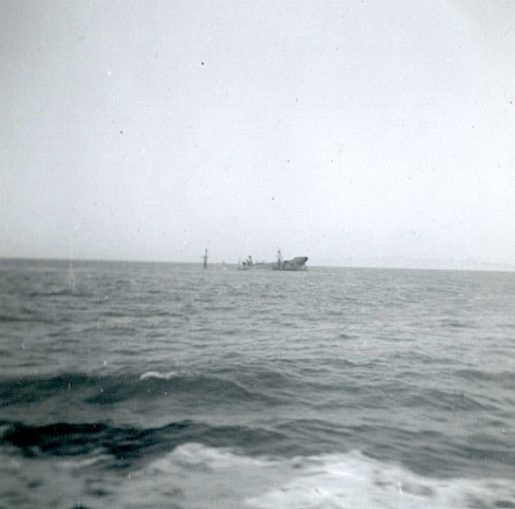
© Always Woreth Saying 2023, Going Postal
Holland, 1949
We shall interrupt my grandparents’ 1947 West Country road trip (to which I shall return) to dip into my father’s 1949 Scout trip to Holland. En route the troop passed a stricken vessel presumably sunk during the war and resting in the literals close to the Dutch coast. As for the location of their camp, I don’t know. Theres a line of trees and a windmill to the left. Another photo, too blurry to publish, shows a mast with the Dutch flag atop and the Union Jack and others beneath, suggesting a proper Scout camp where there were yachts for hire. The caption refers to a lake rather than a harbour or the open sea.
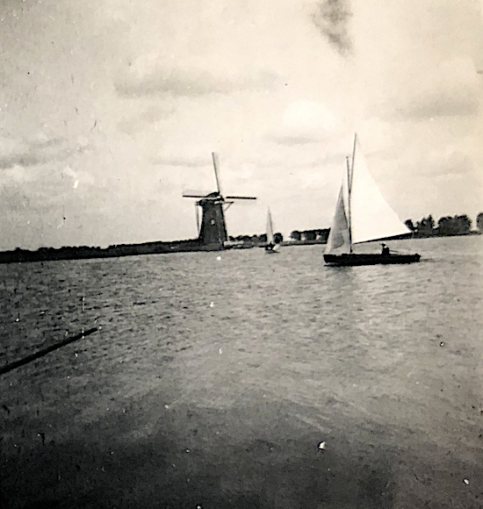
© Always Worth Saying 2023, Going Postal
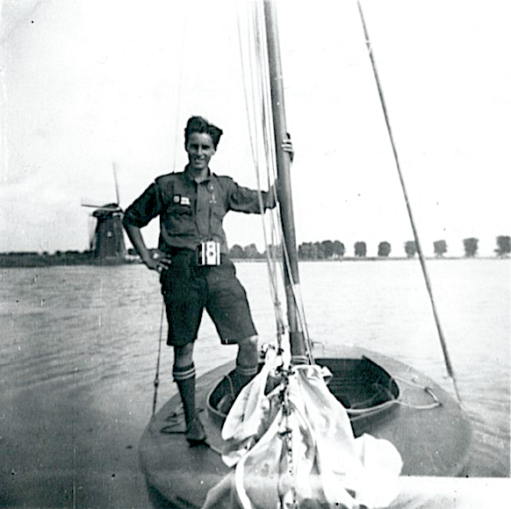
© Always Worth Saying 2023, Going Postal
I had better luck with their trip to the island of Marken whose distinctive wooden harbourside buildings remain to this day. Marken is a quaint village located in the municipality of Waterland in the province of North Holland. As of 2021, it had a population of 1,745. The village is known for its traditional Dutch charm, with its old-world traditions still alive. Marken is highly appreciated by tourists for its museum-like ambience, reminiscent of an older era in Dutch history.
Also recognised as one of the Netherlands’ most traditional fishing communities, visitors can expect a unique, time-honoured experience, making it a must-visit site for those seeking to understand the rich cultural history of the Netherlands. Marken sits in the southern Markemeer of the Zuiderzee, just over a mile from the coast and eight miles northeast of Amsterdam. Since 1957 it has been connected to the mainland by a causeway, but in 1949 the Scouts will have arrived by ferry from Volendam.
You can have look around here.
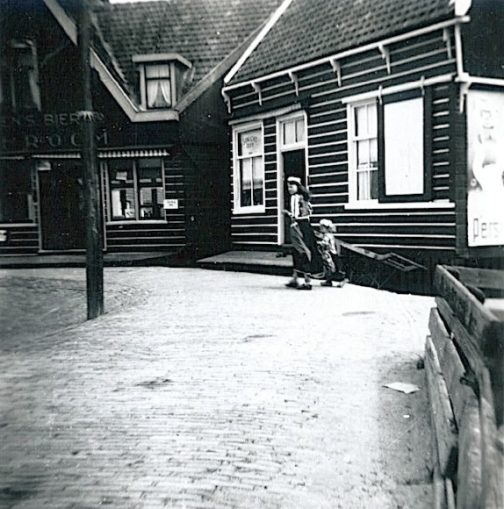
© Always Worth Saying 2023, Going Postal
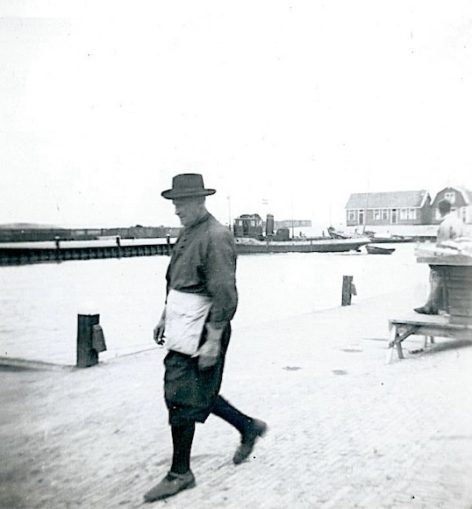
© Always Worth Saying 2023, Going Postal
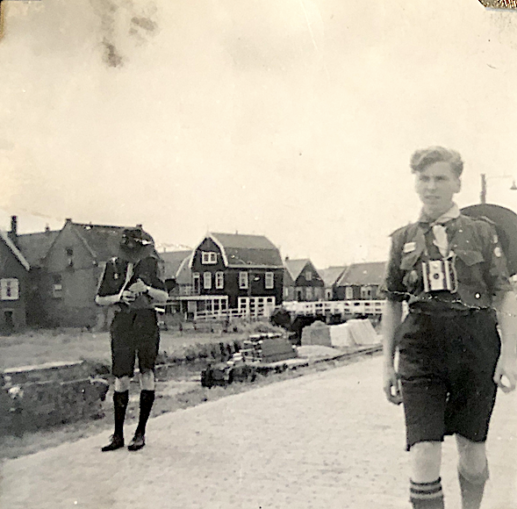
© Always Worth Saying 2023, Going Postal
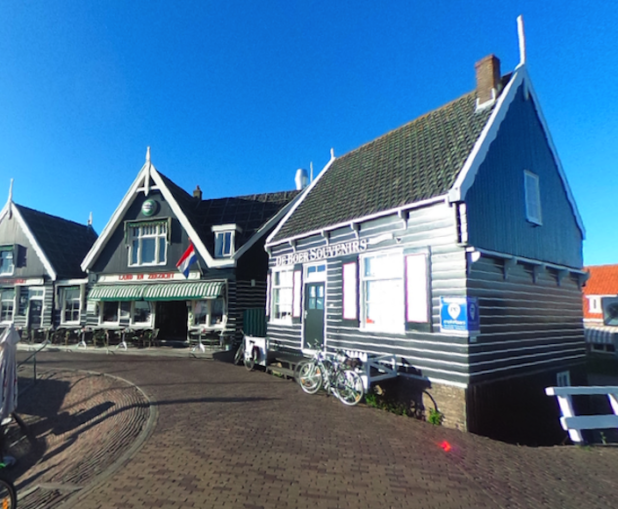
© Google Street View 2023, Google.com
Puffins will be thrilled to hear that the building closest to the camera is now Boer Souvenirs, no doubt stockists of gold, diamonds, antelope meat and Bantu nick-nacks. As well as the wooden buildings, the tiled harbour side and stepped kop to the water have survived.
Despite a distinctive appearance, I didn’t have any luck with the following windmill. It is nowhere near the wet, is white, consists of three stories below a thatched roof and is surrounded by a wall. Well-travelled puffins may spot it right away as the De Hoop windmill in Arnhem but I’m not so certain. Even if the mind’s eye were to pick away Arnhem’s surrounding modern sprawl to reveal only the persuasive row of old houses and trees in the background, De Hoop is up on a mound (beltmolen) and circled by a hedge.

© Always Woreth Saying 2023, Going Postal
Using the excellent molen database I tried to check all the round (ronde) windmills (molen) without a mound (grondzeiler) from the Hook of Holland to Rotterdam, up to Amsterdam and beyond but drew a blank. Puffins can claim bragging rights via the following link. Remember, you’re looking for a ronde molen grondzeiler.
Noordwijk
My luck changed as I turned a page and was greeted by dunes and Atlantikwall camo colours. This is Noordwijk, a picturesque seaside village just minutes from Amsterdam Airport Schiphol. An accessible destination for visitors, because of its long sandy beaches, it has become a popular resort town, with an estimated 1,000,000 overnight stays per year. It is known not only for its natural beauty but also for its rich history and culture.

© Always Worth Saying 2023, Going Postal
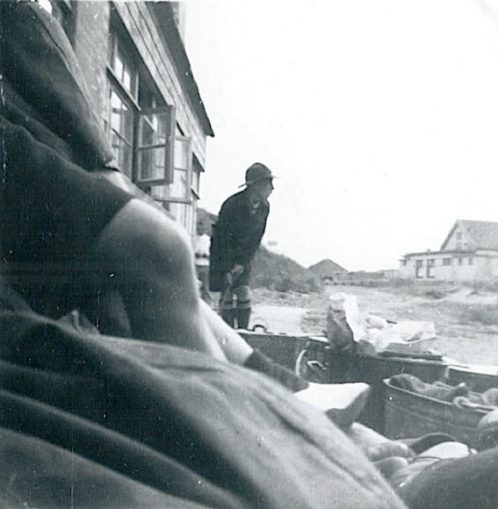
© Always Worth Saying 2023, Going Postal

© Always Worth Saying 2023, Going Postal
It is also renowned for its nature reserve and significant racing heritage, particularly the Circuit Zandvoort, a motorsport race track. Those beaches stretch for over 6 miles and are popular for sunbathing, beach sports and windsurfing. The town’s dunes are part of the Zuid-Kennemerland National Park, a haven for nature lovers with its diverse flora and fauna.
The village boasts a lighthouse and a KNRM rescue station, highlighting its strong maritime tradition. Apart from its natural attractions, Noordwijk is home to several popular attractions, including the Space Expo, Het Strand Van Noordwijk Aan Zeedd (the beach promenade), the Museum of Comic Art (MoCA) and horse riding.
Moreover, due to its proximity to Amsterdam, 30 minutes by train, it’s an ideal location for meetings and conferences, offering a refreshing break from the urban hustle. The village also has a rich history, as seen in its World War II bunkers, and is home to several personalities. In a nutshell, Noordwijk offers a mix of relaxation, history, and cultural exploration, making it a must-visit destination in Holland.
The Atlantic Wall was a coastal defence line built by Germany during World War II, stretching from Norway to Spain. In Noordwijk, parts of this extensive structure remain as silent reminders of the wartime past. The wall, constructed to prevent an Allied invasion, included bunkers, fortifications, and artillery positions.
Noordwijk’s section of this line includes the Museum Engelandvaarders, located in a former radar station. Here, you can explore fascinating exhibits about Dutch citizens, known as Engelandvaarders, who escaped to England during the occupation to join the fight against Nazi Germany. The Atlantic Wall’s remnants in Noordwijk provide a poignant piece of history amidst the town’s scenic beauty.
Back in 1949, it is refreshing to see Adolf’s fortifications used for cricket and the Scouts, in the time-honoured fashion (the Wehrmacht will have used the same trick), attracting the attention of local girls by feigning injury.
Zandvoort
Another good point about Noordwijk is that it is only a ten-mile trip along the coast to Zandvoort, home to the Dutch Grand Prix. The racing circuit, officially known as Circuit Park Zandvoort until 2017, has a rich history dating back to the 1930s. It is known for its challenging and undulating layout in the dunes near the North Sea coastline. The Circuit Zandvoort has been the venue for the Dutch Grand Prix for multiple years, making it a significant site for Formula 1 fans worldwide. One of the shorter circuits on the F1 calendar, Puffins will be thrilled to read that the lap record belongs to Dame Louise de Hamilton with a time of 1:11.067′.
Nowadays the track also offers various activities and amenities such as sim racing, food and drink options, driving experiences and a circuit shop. There are also opportunities for business events, hospitality and lounges, team activities, circuit rental and partnerships. Moreover, for those who enjoy outdoor activities, the circuit is surrounded by mountain bike trails and hiking routes.
As for the track’s history, situated a few miles from the tulip capital of Haarlem, minor races were held on a street circuit in the town in the 1930s. During the war, roads were built through and along the dunes to access the coastal defence positions of the Atlantikwall. After the war, these roads were linked and widened, with one of the first racing events being held in 1949 during my father’s visit.

© Always Worth Saying 2023, Going Postal
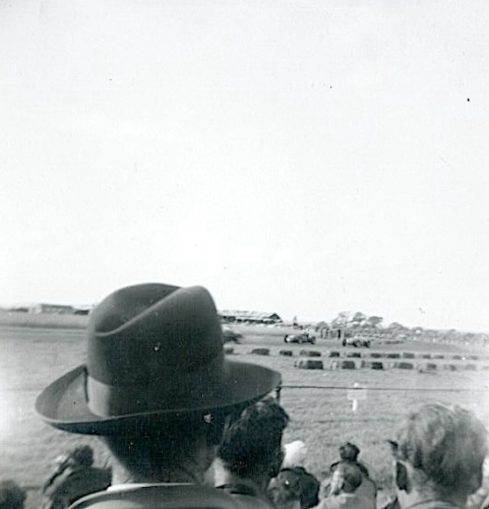
© Always Worth Saying 2023, Going Postal
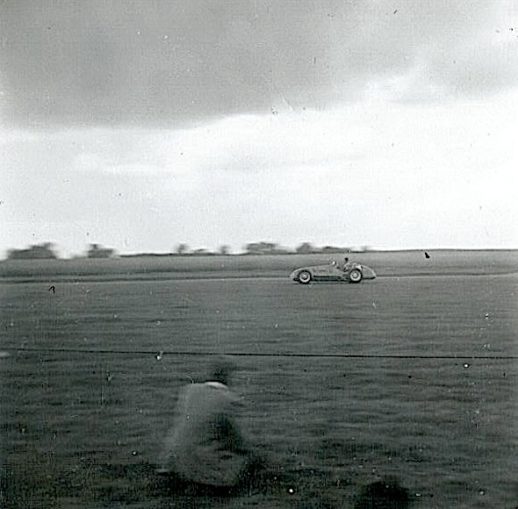
© Always Worth Saying 2023, Going Postal
That Grand Prix was held on Sunday, 31st July, with the sensible Dutch putting a rope up to keep the crowd well away from the cars and lining the corners with hay bales for extra protection. Although the golden days of racing began in the mid-50s with Fangio, Stirling Moss and Jack Brabham gracing the grid, the late 1940s weren’t without their characters.
Besides the iconic British green and German silver cars lapping Zoovert, my father’s old camera didn’t do justice to the Thai racing pale blue and yellow (with white mouse on the bonnet) of Prince Birabongse of Siam. Being the grandson of King Rama IV, whose life was reimagined in the musical ‘The King And I’, was no great shakes as the old goat fathered 39 sons and 43 daughters through three wives and 77 concubines.
Prince Bira studied sculpture at Cambridge University, exhibited at the Royal Academy, lived in Cornwall and drove a racing car. Despite having the fastest lap time, 1’58’, an average of 79.95mph, the Prince and his Maserati finished third in 1949 behind winner Count Luigi Villoresi and second-placed Baron Graffenreid of Switzerland.
Born Prince Birabongse Bhanutej Bhanubandh, Prince Bira’s racing career spanned from 1936 to 1954, during which he won multiple races, including the Coupe de Prince Rainier at Monte Carlo. However, his life was not without difficulties and included several marital and financial challenges. A husband to five wives; the first was Miss Ceril Heycock, one of his models at Cambridge. Wife number two was Senorita Celia Howard of Buenos Aires. His cousin, half-Hungarian Prince Chula, officiated the wedding by covering the blushing bride in holy water while she reclined on oriental cushions in an incense-perfumed room at the Thai Embassy in Paris. Wife number four was Olympian Arunee Bhanubandh na Ayudhya who competed in the sailing at the 1964 Tokyo Games.
1949 was a busy year for the prince. Days before the Grand Prix, he had escaped with cuts and abrasions to the head, face and hands when he crashed his glider near Oakhampton. Earlier, he tried and failed to beat the British gliding record but did manage to cover 120 miles. In January, he had successfully claimed the Gold Laureate Button for a sustained glider flight of 242 miles, starting from an initial altitude of 9,000 feet and travelling from Buenos Aires south to Gonzalez Cheves. A month after Zandvoort, Prince Bira left the track during the Czech Grand Prix and killed seven spectators.
In 1985, aged 71, he himself died after a heart attack at Barons Court Tube station. Having been out of the limelight for many years and only carrying documentation made out in squiggly Thai writing, he lay for a while unclaimed in a local morgue.
Even more interesting than a West Country motoring holiday!
© Always Worth Saying 2023


